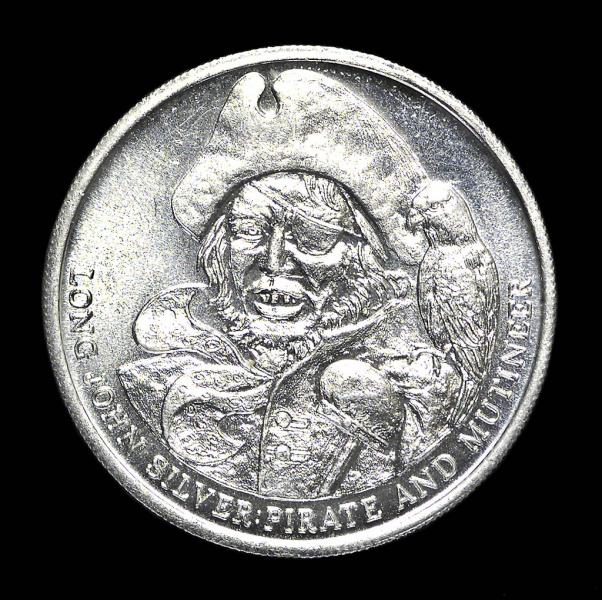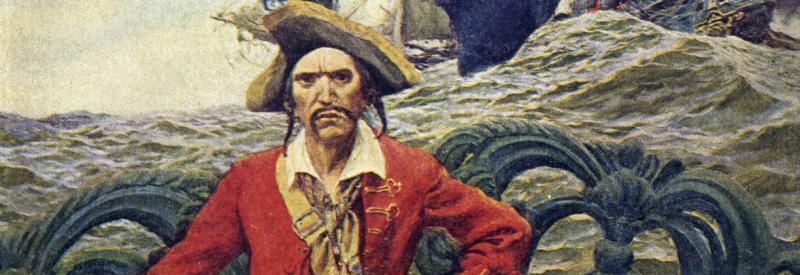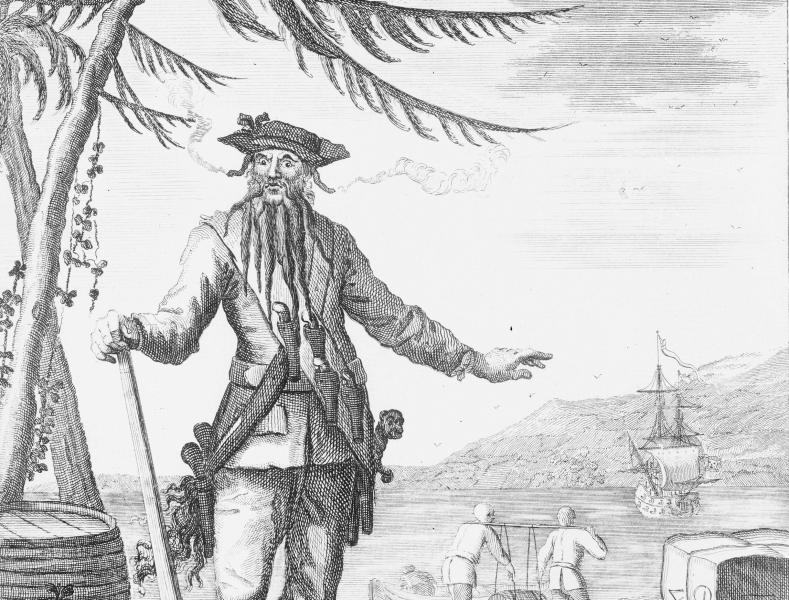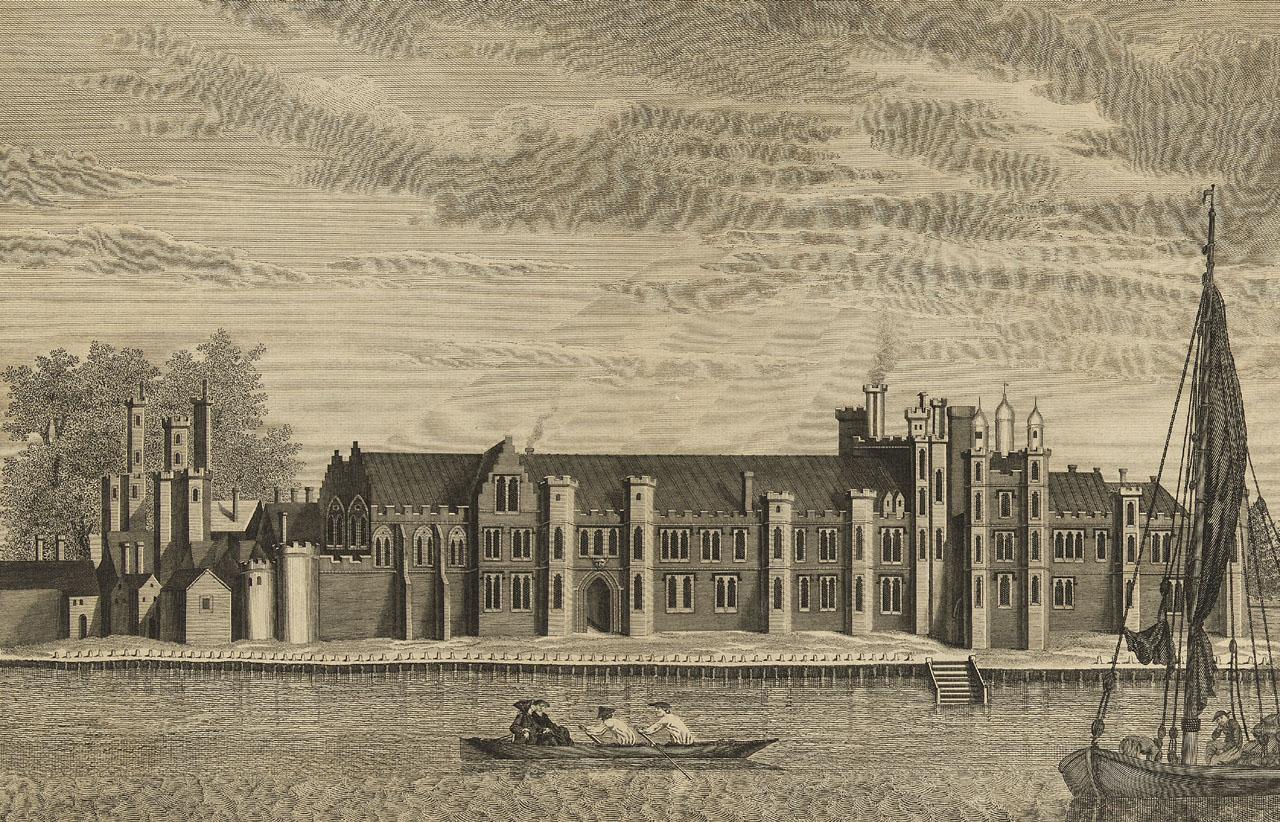
An intrepid mariner, pirate, rebel, shrewd political tactician and female trailblazer – there are many ways to describe Grace O’Malley.
Known as Ireland’s ‘Pirate Queen,’ Grace O’Malley was born in 1530 into the clan Uí Mháille, a seafaring people based on the west coast of Ireland. Over the course of her lifetime – a time marked by the Tudor reconquest of Ireland – Grace O’Malley established herself as a powerful ruler by land and sea, incurring hardships, imprisonment and conflict to ensure her community’s survival.
We talk to Anne Chambers, author of Grace O’Malley: The Biography of Ireland’s Pirate Queen 1530–1603, to find out more about the resilient pirate’s extraordinary life.
Born in 1530 in County Mayo, western Ireland, Grace was the daughter of the O'Malley chieftain – Owen 'Dubhdara' (Black Oak) O'Malley – and Margaret O'Malley.
Early life: Grace O'Malley grew up at the family castles of Belclare and Clare Island. It’s likely that she would have been educated at the local monastery.
Piracy and politics: Both on land and at sea, Grace became a key figure on the west coast of Ireland in the 16th century. A letter to the Tudor court describes her as “the nurse to all rebellions in the province for 40 years”
Meeting with Elizabeth I: In September 1593 Grace was granted an audience with Queen Elizabeth I at Greenwich.
Died: in 1603 at the age of 73, most likely at Carraigahowley castle. She is buried in the ruins of the Cistercian abbey on Clare Island.
Who was Grace O'Malley?
The only daughter of the Gaelic chieftain Owen ‘Dubhdara’ (Black Oak) O’Malley, Grace was actively involved in the O’Malleys' seafaring enterprise from childhood, and took part in plundering and piracy missions.
The clan’s territory spanned areas along the coastline of County Mayo centered in island-strewn Clew Bay, a body of water which had Clare Island at its mouth.
Life as a pirate on the west coast of Ireland was a tough and dangerous career. In order to survive into old age on the wild Atlantic Ocean, Grace needed to have an extensive knowledge of the sea, its tides and currents. An understanding of the unpredictable weather and how to navigate by star and compass was also crucial.
“Like every accomplished mariner she had to know when it was safe to sail, and when it was safer to stay ashore,” biographer Anne Chambers explains. “She had to be in tune and respectful of that dangerous ocean.”
Grace’s plundering and piracy missions took her as far afield as Spain and the Isle of Barra in the Outer Hebrides, Scotland. Closer to home, Grace would make forays into isolated coastal areas to reap whatever she could find, such as cattle.
“Ireland at the time was a great cattle rearing country, and the wealth of every chieftain was numbered not on the acres of land he had, but on the number of cattle these acres could support,” Anne explains. “Cattle raiding was part of Grace’s life, and her galley ships would have been able to take some of the animals on board.”
English historical records state that Grace’s galley ships were substantial in size and each could carry around 200 men. “Her galleys were a development of the original Viking longship,” Anne says. “However, Grace’s galleys had the advantage of the lateen or triangular sail that made the ships more manoeuvrable at sea. They were shallow, wooden-hulled and clinker-built, and were powered by as many as 30 oars. The ships were very versatile and could sail close to the shoreline.”
Grace also introduced a new type of piracy: toll taking at sea for safe passage.
“Grace and her clan took tolls on ships which she maintained were passing illegally through waters controlled by the O’Malley clan for generations.” Anne says. “It was a very busy route, with traffic coming up from Spain to the busy port of Galway and onwards to Ulster and Scotland.”
The O’Malleys had long-established trade links with Spain from where they imported items such as iron, weapons and wine in exchange for barrels of salted fish, pine marten skins, fleeces, cattle hides and tallow.
“Grace had a little maritime empire – part trade, part mercenary and part piracy,” Anne says. “She became quite a wealthy businesswoman in her own right.”
Grace O’Malley: fact or fiction?
Many tales of Grace’s exploits appear in Irish folklore, but, as Anne found from her research, separating fact from fiction can be tricky. “Many of the folktales about Grace O’Malley, that had been preserved from fireside to fireside in the homes of the ordinary people in the succeeding four hundred years since her death, were replicated in the contemporary official manuscripts I unearthed, both in private and public archives.”
A notable example, she says, is the story surrounding the birth of Grace’s youngest son, Tibbott.
According to folklore, Tibbott was born on board his mother’s ship. The day after his birth, Algerian pirates attacked the ship. Upon hearing the news, Grace came up on deck, rallied her men, and saw off the pirates.
This extraordinary encounter does appear to have a basis in fact according to Anne: “During the course of my research I found the document written in Latin that confirmed this incident. Many towns along Ireland’s west and southern coasts during this period were attacked by North African pirates, which lends further credence to the traditional account of Tibbott’s birth.”
Other legends state that Grace was bald, which led to stories that she shaved her head to look like a boy in order to sail with her father.
“Grace O’Malley is known in Irish folklore as ‘Granuaile,’ which is pronounced ‘Grainne Mhaol,” Anne says. As the Irish word ‘maol’ means ‘bald,’ it was assumed she had little or no hair. However, as Anne explains, the local pronunciation of the name O’Malley is Maille (phonetically pronounced Maolya), and hence the basis of the story.
Murder, prison and revolt: Grace O'Malley and the Tudor reconquest of Ireland
During Grace’s lifetime, Ireland underwent tremendous social and political upheaval. The old Gaelic laws and customs, present at her birth, were swept away by the time of her death, as the Tudor reconquest of Ireland took hold.
“From around the 1570s, the conquest of Ireland by the Tudors became more urgent,” Anne says, “Queen Elizabeth I feared her enemies, including King Philip II of Spain and Pope Pius V – who excommunicated her – would use Ireland as a backdoor to attack England; as the old saying of the time had it: ‘he that will England win, first with Ireland must begin.’”
For Grace, the reconquest of Ireland resulted in immense personal hardship and loss.
In 1584, the English naval commander Sir Richard Bingham was appointed governor of Connaught – in which the lands of Grace and her extended family were located. “Bingham was one of the new breeds of Puritan military men in the service of the Queen,” Anne says. “His mantra ‘the Irish were never conquered by words but by the sword’ he put into action in Connaught. He was especially antagonistic to Grace, a woman as he wrote who ‘had overstepped the part of womanhood.’”
Bingham’s appointment was to cause Grace protracted suffering. Her eldest son Owen O’Flaherty was murdered following a dispute with Captain John Bingham, the Governor’s brother.
Determined to avenge the murder of her son, Grace went into rebellion. She was captured by Bingham, and later testified that he “caused a gallows to be built where she thought she would end her days.” Such was Grace’s importance as a leader that on hearing of her capture, the Irish chieftains came together and gave hostages to ensure her release.
Bingham retaliated by confiscating Grace’s extensive cattle and horse herds, driving her off her land and forcing her to live on her galley ship.
Grace O’Malley and Queen Elizabeth I - an unlikely meeting
But, the tipping point for Grace occurred in 1593 when her youngest son Tibbott was captured by Bingham, charged with treason and imprisoned in Athlone Castle.
In order to save her son’s life, Grace decided to embark on the most dangerous voyage of her career: a journey which involved sailing around the south coast of Ireland, through the straits of Dover, and up the Thames to Greenwich Palace to seek a meeting with Queen Elizabeth I.
“Grace’s motivation was one that every mother can identify with… to save the life of her child,” Anne says.
Obtaining an audience with the Queen was no mean feat, and Grace had to utilise her shrewd political skills in order to successfully navigate the channels of the Tudor court. English state papers from the period give an insight into the administrative process Grace had to go through, from writing a petition to the Queen (written on Grace’s behalf by a scribe in July 1593) to answering a series of questions.
“It shows you how tuned in Grace O’Malley was politically,” Anne says. “She knew who was who at the English court and how to use that influence to her advantage.”
In September 1593, Grace O’Malley was granted an audience with Queen Elizabeth I. “They sat down as elderly, experienced women, both leaders in what was perceived to be a man’s world.” Anne says.
Even before the meeting, the Tudor court had long been aware of, and intrigued by, Grace O’Malley.
In a letter to the English court, Sir Richard Bingham declared that she had been “the nurse to all rebellions in the province for forty years.” Another English administrator in Ireland described her as “a most notorious woman in all the coasts of Ireland” while the Elizabethan courtier and poet, Sir Philip Sidney, was reportedly captivated by his conversation with Grace during his visit to Ireland in 1577.
Despite the evidence against her as a rebel and a pirate, Grace’s meeting with the Queen was successful. Contrary to the advice of her own military governor, Elizabeth granted Tibbott his freedom, Grace’s stolen lands were returned, and she was allowed to continue with her career at sea.
“One of the highlights of my research was finding the letter from Queen Elizabeth I confirming their remarkable meeting at Greenwich,” Anne says.
The legacy of Grace O'Malley
After a lifetime traversing the sea, Grace died in 1603, aged 73.
“Despite her dangerous career Grace O’Malley survived into old age and is surely an iconic example of positive ageing,” Anne says.
Following her death, Grace’s accomplishments were written out of the historical records, and only folklore kept her memory alive.
“Succeeding generations of Irish historians wanted to portray Gaelic womanhood in a certain way,” Anne explains. “Gaelic women had to be patriotic, usually Roman Catholic, and charitable. Grace O’Malley, however, who had challenged the social, religious and political conventions and who did not readily conform to the patriotic, God fearing and dutiful picture of Gaelic womanhood promoted by later generations of historians, was consequently airbrushed from history.”
Without the English state papers, the details of Grace O’Malley’s life would not have been survived.
Today, Grace O’Malley is the subject of plays, books and television shows. Unlike other pirates, such as Mary Read and Anne Bonny, who operated on the seas a century later, Grace never felt compelled to deny or to hide her womanhood.
“I set out to find the woman behind the image of the Pirate Queen and what a woman she was,” Anne says. “As well as a leader of a private army by land and sea, intrepid seafarer, rebel, pirate, political tactician, Grace O’Malley was also a daughter, wife twice over, mother of four children, divorcee, lover, a grandmother and a matriarch. One would have to say… some woman for one woman.”
Anne Chambers is a biographer, novelist and screenplay writer. She is the author of Grace O’Malley: The Biography of Ireland’s Pirate Queen 1530–1603 (Gill Books). Find out more at www.graceomalley.com

Rebel Women and Female Pirates
Main image courtesy of Suzanne Mischyshyn/Wikimedia Commons. Statue located at Westport House, County Mayo









